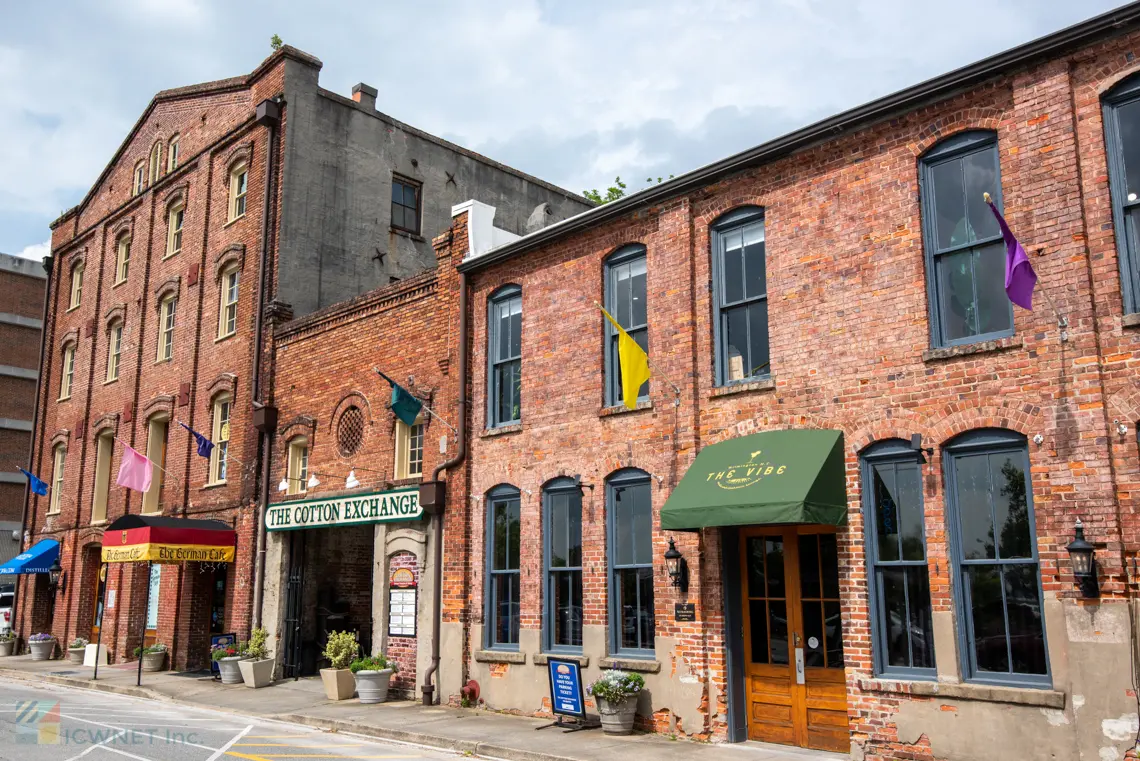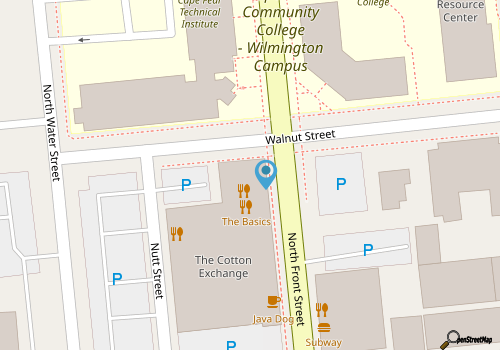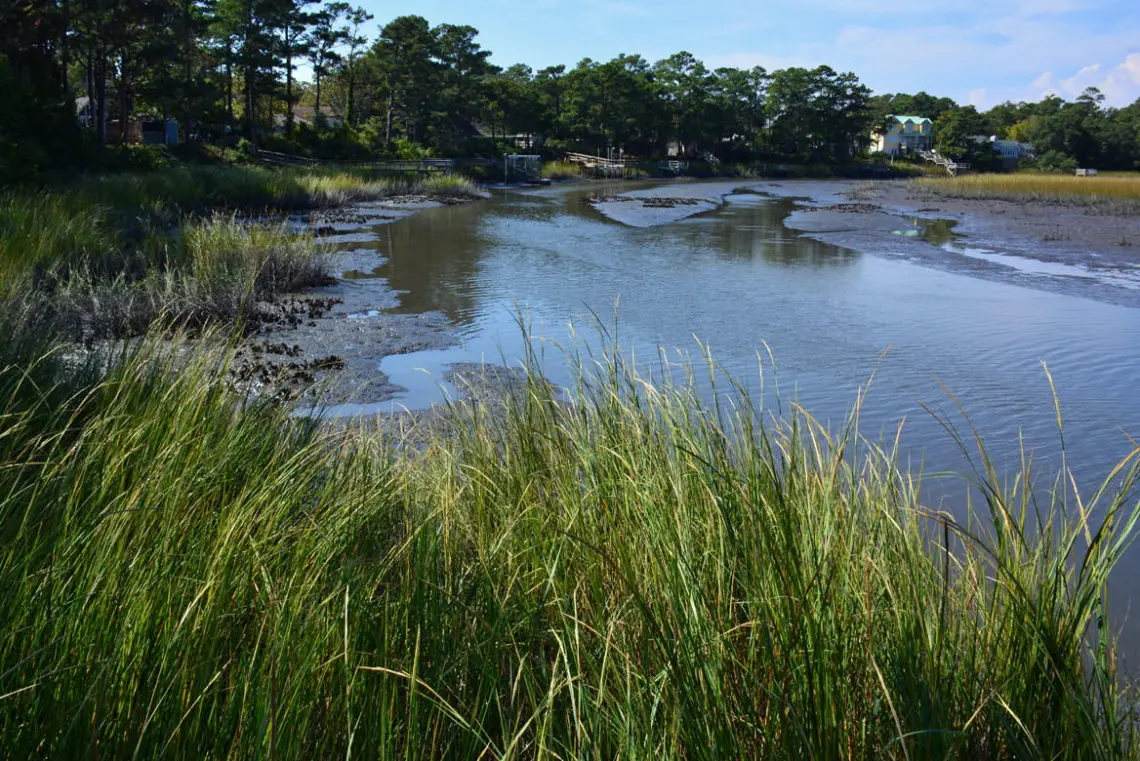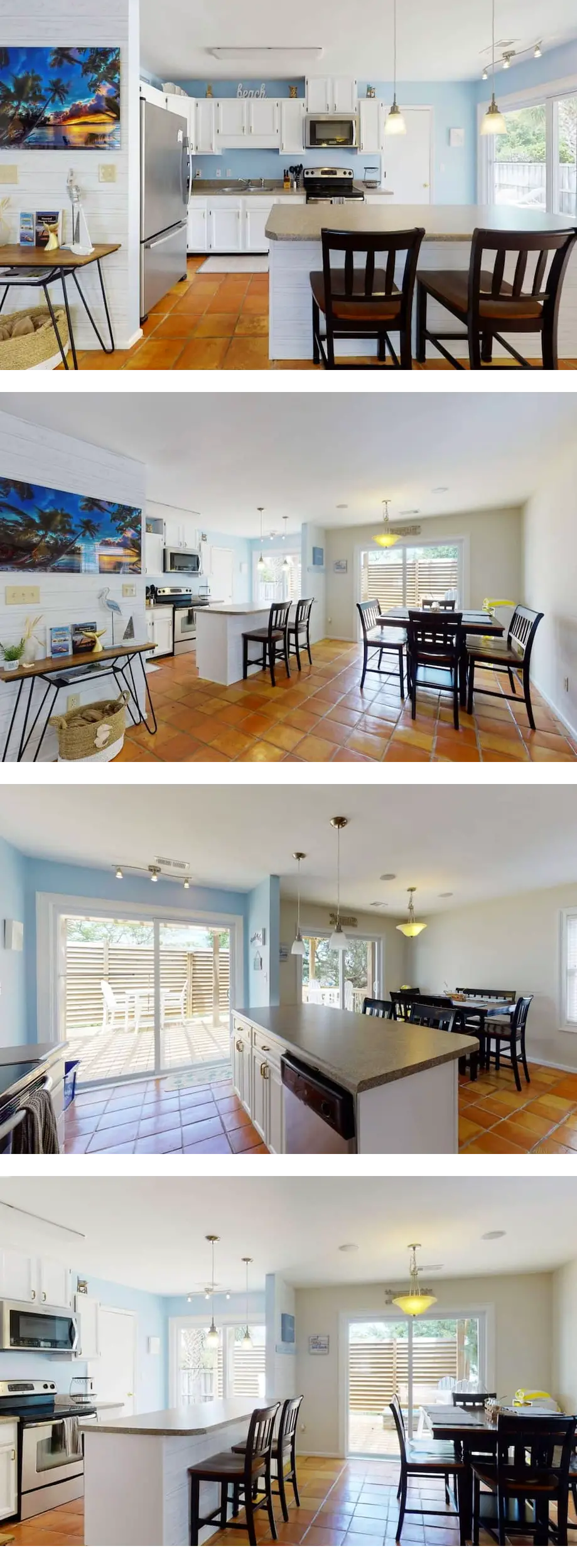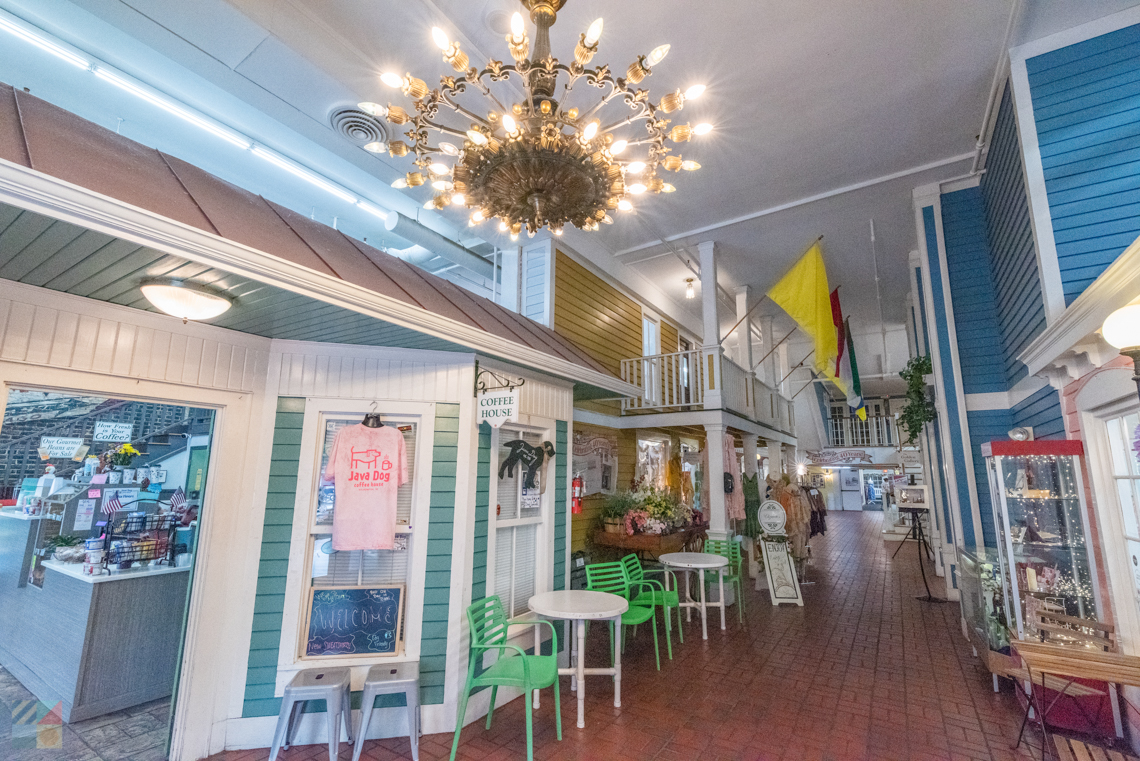
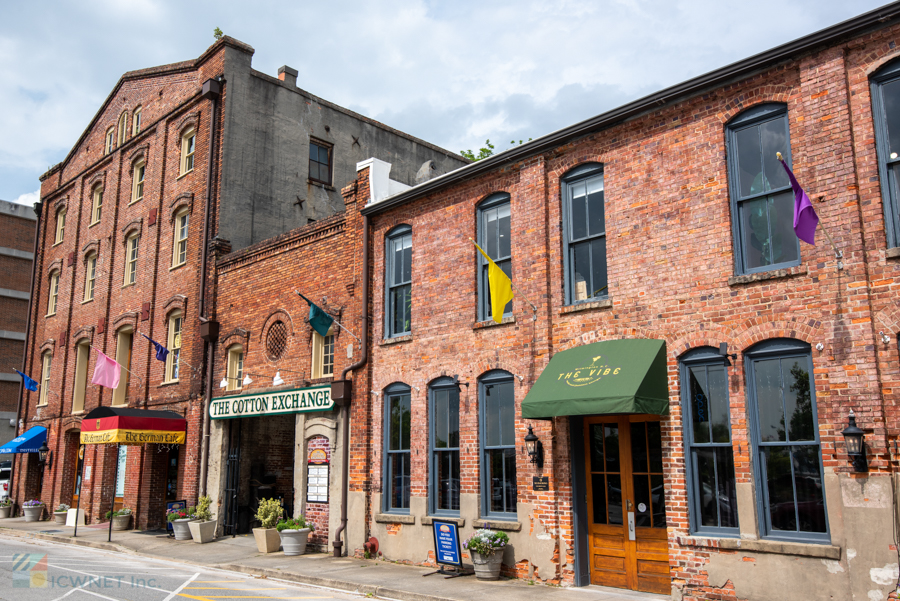
Visitors can celebrate Wilmington's deep-rooted history in trade with a visit to the historic Cotton Exchange. The complex of eight buildings features over 30 shops and restaurants that are worthy of exploration, and will provide an enjoyable morning or afternoon of retail therapy for Wilmington visitors of all tastes and styles.

The brick building complex has maintained its outward appearance, more or less, since the complex was initially constructed just years before the Civil War. In an effort to keep up with the flourishing maritime shipping and railroad industry, big construction projects were continuingly taking place throughout the Downtown region bordering the Cape Fear River, and the Cotton Exchange was part of this massive expansion. The large Sprunt Building was originally home to the Cape Fear Flour and Pearl Hominy Mill in 1884, the largest of its kind in the southern states, and the structure was renovated slightly in 1919 to make room for the building's new tenant, Alexander Sprunt & Sons. This company shipped cotton all over the world, to ports in the Americas and Europe, and the complex earned its designation as the "Cotton Exchange."
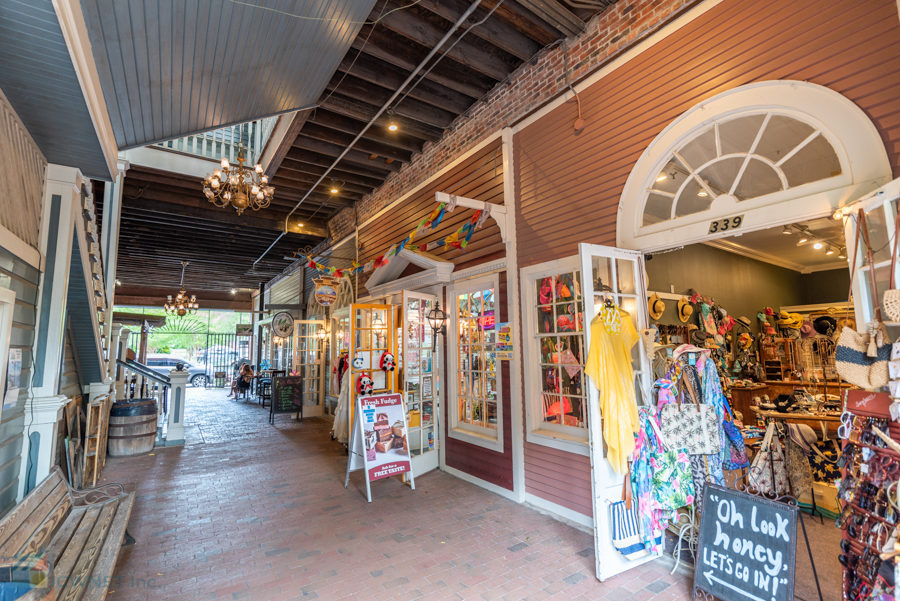
The eight buildings along Front Street that make up the Cotton Exchange originally all housed a separate industry that was invaluable to local residents. For example, the Wood Seed Building originally operated as a laundry house, then a seed company, then a barber shop popular with the local railroad executives, while the Bear Building served as a wholesale grocery store and the O'Brien Building housed Wilmington's "Sears, Roebuck, and Company."

In the late 60s and 70s, the collection of buildings underwent a small series of tragedies, with a passing hurricane which leveled a back wall, and a fire which wrecked a portion of the Bear Building. In 1975, however, a time when Wilmington was revitalizing its waterfront downtown region, vast repairs and renovations were made and the new "Cotton Exchange" became the first downtown complex in the state to adapt and utilize existing buildings, paving the way for future downtown revitalization projects across North Carolina.
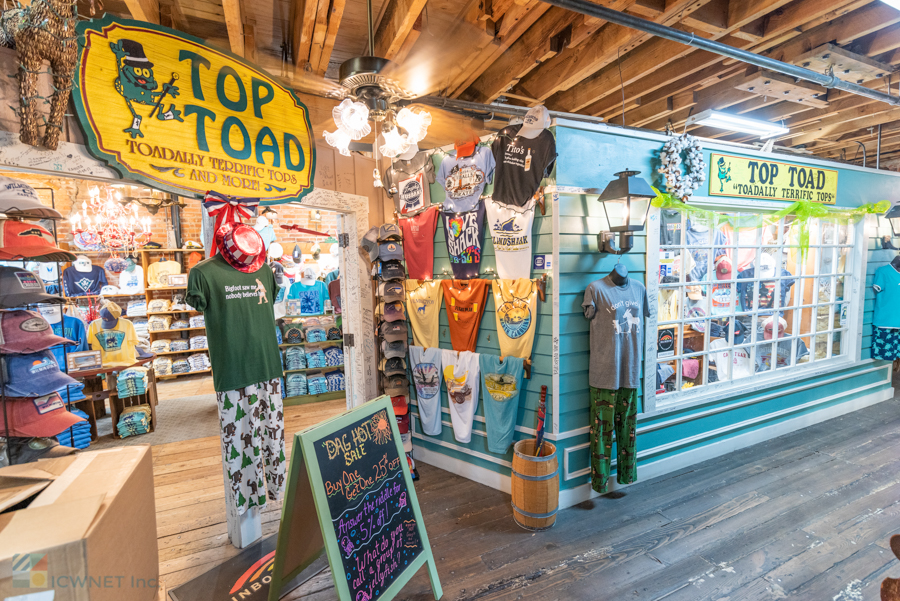
Today, visitors can explore all 8 buildings, which are connected through a series of open outdoor courtyards, brick walkways, with small exhibits along the way pointing out the highlights of the Cotton Exchanges' story. Inside, the Cotton Exchange maintains its original charming brick facade, with gigantic heart pine beams overhead keeping the structure sound.
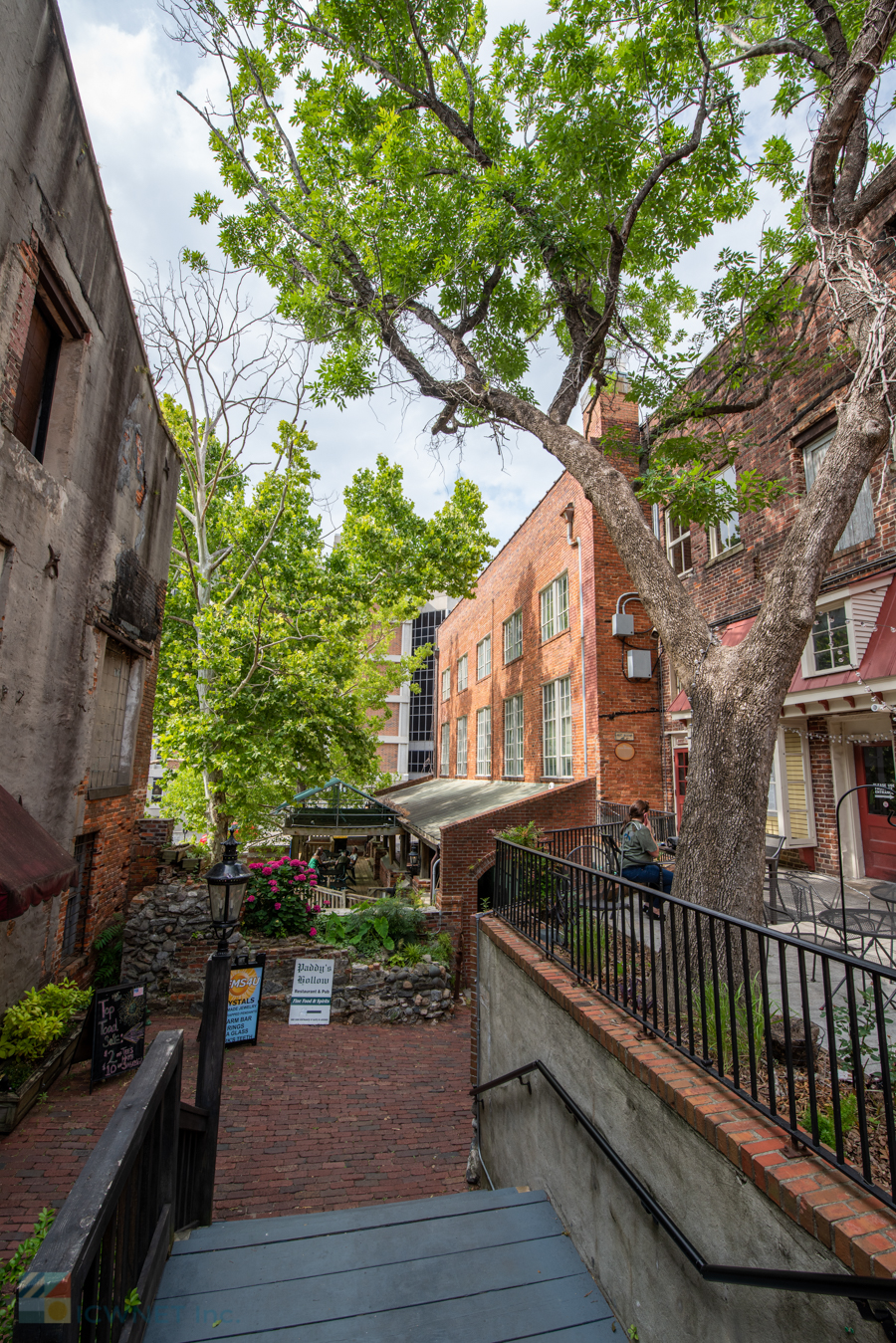
There are five restaurants on site, including a coffee shop, an ice cream shop, German Cafe, gourmet Soul Food Restaurant, and a restaurant and pub which evokes the original saloon that once called the Cotton Exchange complex home.

The range of stores are impressive and even overwhelming, with a variety of gift shops and a "general store" that specializes in souvenirs and local treasures. Shoppers will also find jewelry stores, pottery and art galleries, exquisite local boutiques, organic and environmentally-friendly specialty stores, and a toy shop that will keep the younger family members thoroughly occupied.

Best of all, visitors don't have to come to the Cotton Exchange with a full wallet to enjoy the atmosphere. The collection of paved courtyards with benches and local landscaping, large individual buildings with multiple shops, and that red brick facade everywhere you look is a charming attraction all its own, even without the decadent shopping options. The Cotton Exchange is so massive, that it even has several entrances, including a wide front entrance that leads visitors into the heart of the main building. Located close to the waterfront, with dozens of seasonal fairs and festivals right outside its doors, the Cotton Exchange is a fun diversion for any history buff or avid shopper.

The Cotton Exchange is open Monday through Saturday, 10:00 a.m. until 4:00 p.m., and Sundays from 12:00 p.m. until 4:00 p.m., (although it should be noted that a handful of shops are closed on Sunday.) There is free parking available for customers close to the buildings' location on the corner of Front and Grace Streets. A map is also available online detailing the parking and location of the varying shops and restaurants.
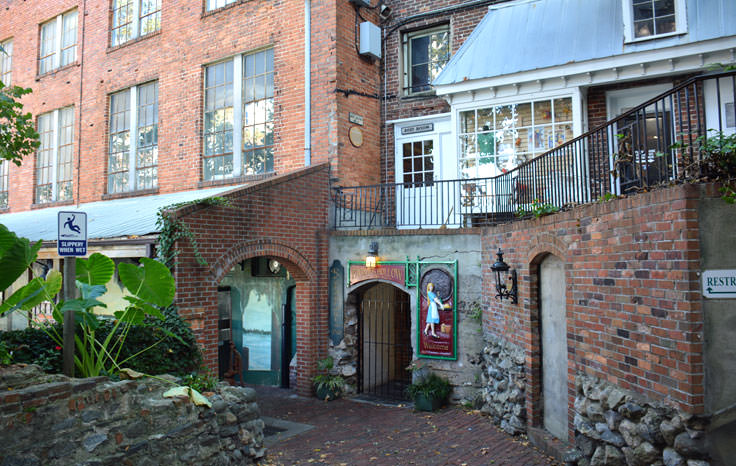
For a unique shopping experience unlike any other on the Carolina Coast, the Cotton Exchange is a must-see. Filled with quirky, charming and elite shops, mouth-watering restaurants, and plenty of historical atmosphere, the Cotton Exchange is a prime example of Wilmington's love affair with Southern culture, history, and relaxing retail therapy.



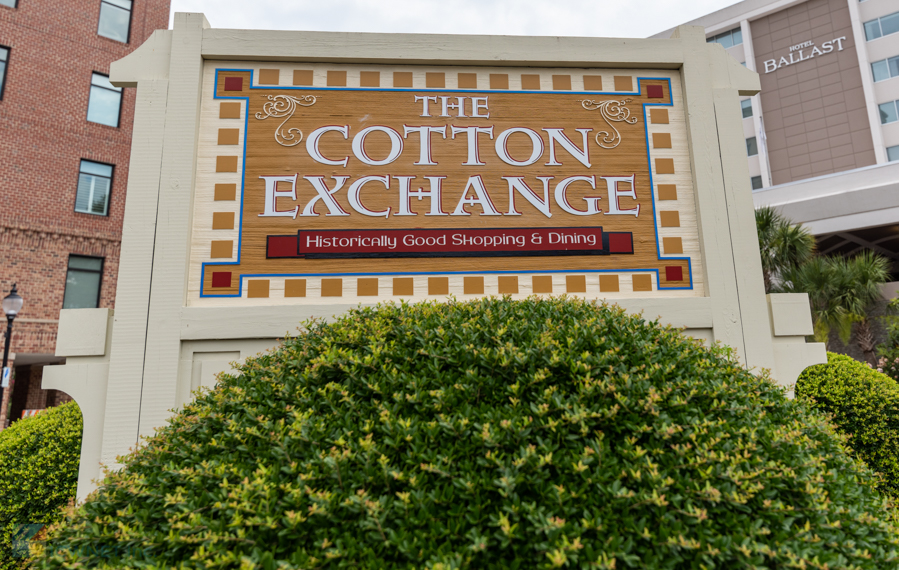

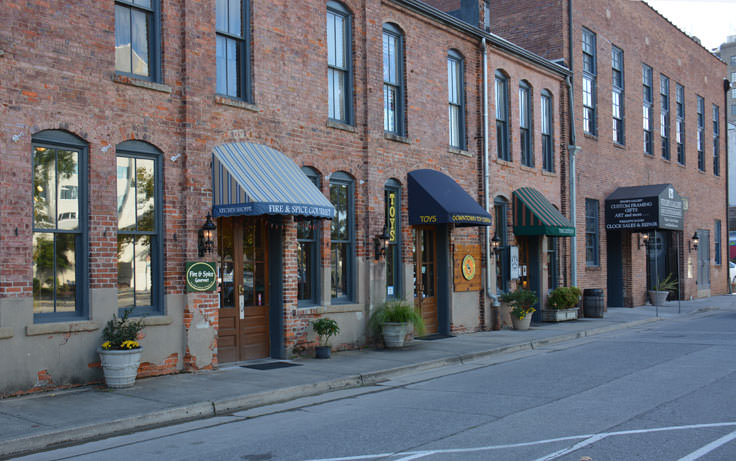
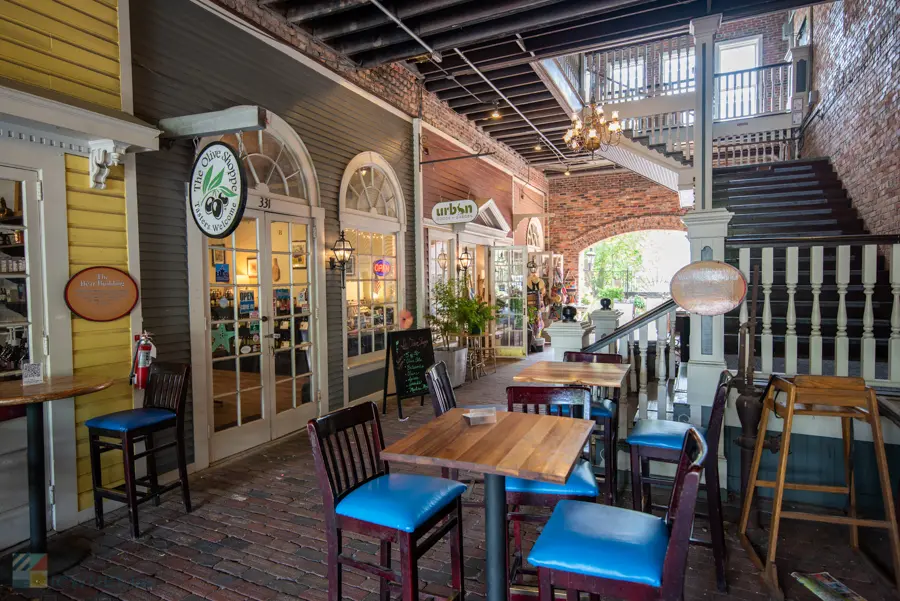
Take a break from the beach and enjoy the winding canals and creeks that border the Elizabeth and Cape Fear Rivers with a visit to the May Moore Park. This small destination, located on the northeastern side of Oak Island, is within walking distance...
Clean and uncluttered beaches and a remarkable local history combine to make the Fort Fisher State Historic Site one of coastal North Carolina's most treasured barrier island attractions. This incredible locale, just miles away from Carolina Beach...
Tipsea Toes has it all! The seclusion of a single family home, a private pool, enormous deck for entertainment, fire pit and so much more! Ideal for a family of 6-7, you’ll have space to stretch out both inside and out. Fresh linens and towels are...
- Carolina Beach
- 3 Bedrooms
- 2 Bathrooms
- Sleeps 7
